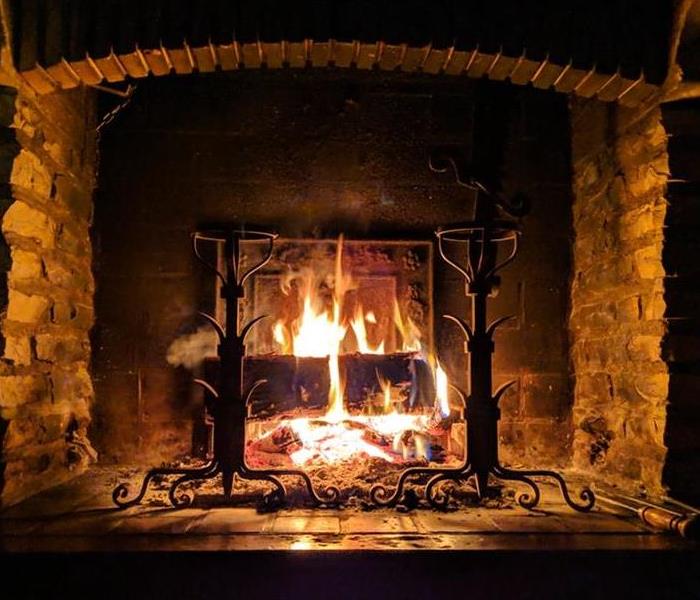Fireplace Safety Tips
1/14/2020 (Permalink)
If you enjoy the occasional fire in your wood-burning fireplace, keep in mind that heating equipment is one of the leading causes of home fires during the winter months. Moreover, according to the National Fire Protection Association (NFPA), more than a third of home heating fires in the U.S. involve fireplaces and chimneys.
Follow these critical fireplace safety tips to help prevent a fire accident in your home during the cold months.
Fireplace safety tips
- Before the heating season, hire a professional chimney sweep to inspect and remove creosote or other obstructions, such as animal nests, from the chimney.
- Allow only a qualified professional to install chimney connectors and chimneys in your house.
- Inspect your chimney cap regularly. If it’s damaged, repair or replace it. If your chimney doesn’t have a cap at the top, have one installed fitted with wire-mesh sides to prevent debris or animals from entering the chimney.
- Keep any flammable objects, such as newspapers, books, and furniture, at least two feet away from the fireplace.
- Make sure there is a fire extinguisher in the room.
- Use only dry, seasoned wood cut to the correct length.
- Have a mesh metal screen or glass fireplace doors installed to prevent embers from shooting out of the fireplace.
- Use fireplace tools to maintain the fire.
- Supervise children whenever the fireplace is being used. Remind them to stay away from the fire.
- Keep pets at a safe distance from the fire, as well.
- Always supervise the fire and never leave it burning when going to sleep or leaving the home.
- Close the damper only when the embers have cooled off.
- Install and maintain smoke alarms and carbon monoxide alarms (CO) outside each sleeping area and on every level of the home. For the best protection, interconnect the CO alarms, so that when one sounds, they all do.
When starting a fire:
- Remove the ashes from the previous fire but let them cool for several hours before disposing of them. Leaving the ashes will result in more smoke, as it reduces the air supply to wood.
- Put the ashes in a metal container with a tight lid. Store it outside, at least 10 feet away from the home and other buildings.
- Open the damper; you may have to look up into the chimney with a mirror or flashlight to check that it’s open.
- Place crumpled paper on the grate and cover it with kindling or another firestarter (but do not use flammable liquids to start your fire!). Add the firewood once the kindling is burning brightly. Then, close the fire screen.
- Don’t overload the fireplace; a large fire generates more smoke and can damage your chimney.
- Never burn plastic, garbage or other toxic materials.
For professional fire damage cleaning services, contact the experts at SERVPRO of Lynn/Lynnfield!
Even with all the proper fireplace safety measures in place, accidents can still happen. As smoke can severely damage a home, it’s essential to get the house remediated as soon as possible. Our fire damage restoration technicians use the latest equipment and techniques to remove soot and deodorize your house after fire damage quickly and properly. For professional fire damage cleaning services in Lynn, Lynnfield or Nahant, contact the SERVPRO of Lynn/Lynnfield office at 781.593.6663.





 24/7 Emergency Service
24/7 Emergency Service
